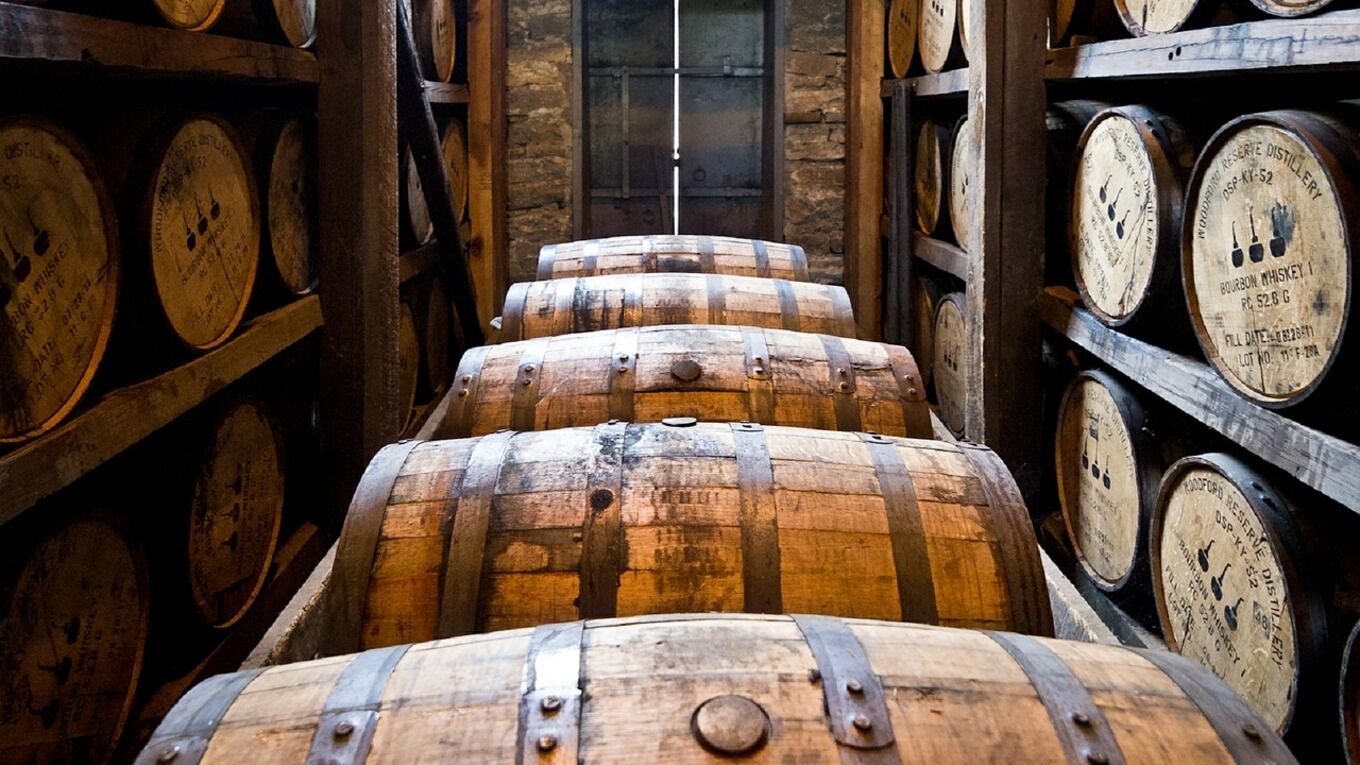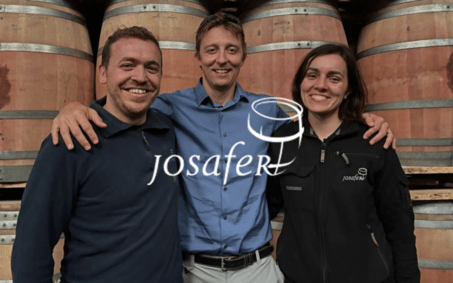Only three ingredients go into whisky: water, barley and yeast. The source of each of these will bring its own character to the final product, but one factor has a crucial effect on the flavour the final product; the cask(s) used to age it. Whilst it is a hotly debated topic, there is general agreement that at least 50% of every whisky’s style and flavour comes from the slightly porous oak. Local temperature fluctuations over the years of maturation cause the wood to slowly expand and contract, drawing the spirit in and out of the oak, softening it and imparting flavour and colour.
Why all the fuss about casks then?
Up until the 1800s, for distillers, ageing their whisky wasn't a thing. They preferred to down it fresh off the still. Barrels were simply convenient for storing large volumes of liquid. Whisky folklore has it that the ageing technique was accidentally discovered during the 18th century when untaxed moonshine was hidden in wooden casks then forgotten. Over time, flavours deepened. Others say as whisky was exported across Europe, the longer it took the barrels to reach their destination, the better the whisky tasted. Needless to say, there are as many tales of the maturation of whisky as there are notes in a butt of the spirit.
How does the oak affect the taste of whisky?
Oak is tough, easy to use, porous and doesn’t leak. Losing the Angels’ Share is quite enough - no one wants the golden liquid disappearing unnecessarily.
Oak also contains oils called vanillin. During the ageing, the whisky is repeatedly absorbed and expelled by the oak butt surface area and draws these oils and their flavours out with it. This inevitably adds character to the whisky.
Aged oak barrels are used because they lack the tannins of younger oak, which upon entering the whisky make it dry and bitter.
Traditionally oak is used for ageing whisky. However, with the current boom in New World whiskies, many distilleries are giving themselves carte blanche to develop not only new ways of distilling but also unorthodox maturation techniques. Whilst visiting and building mutually beneficial relationships with prominent New World distilleries, Cask World has sampled whisky aged in 150-year-old beer barrels, ex-pomegranate wine casks, and even ‘Frankencasks’(made up of staves from various different kinds of wood) ! Proving that the rules for whisky making are certainly not written in stone.
Do different oaks affect the taste?
Oak’s effect on the taste of whisky cannot be over-exaggerated. Here, details are everything. There are over 600 species of oak, all of them used to make different cask types. Whisky aged in oak barrels brings us those toasty, caramel, nutty, or vanilla notes we love as opposed to the white and fiery spirit before the maturation process.
Wood from the European Oak (Quercus robur), American Oak (Quercus alba) and Japanese Oak (Quercus mongolica) are all used to age whisky.
Now, each oak adds its own distinct characteristics to the profile of the whisky. But what if oak doesn’t really grow well in your climate, and you want to develop a local whisky with local ingredients and locally-made casks? When Cask World explored the Flóki Distillery in Iceland, they were astonished to find that birch is one of the few native trees, and Flóki offer a birch-finished expression - something uniquely Icelandic. Birch casks are highly porous though, leading to a very quick evaporation, meaning they are only suitable for partial maturation. This is just another example Cask World has come across of New World distilleries adding new chapters to the whisky rule book.
European Oak:
The European Oak has been used to mature whisky for centuries. Originally UK oaks were used, then Russian (trees grow straighter and are easier to to work with), then in the 1860s when sherry was imported from Spain, in an early example of recycling, Brits used ex sherry casks of Spanish oak to mature the whisky. European oak whisky casks deliver a remarkable full, intense aroma to the matured whiskies.
American Oak:
To save the declining coopering industry after prohibition, a law was passed; American whisky had to be matured in new wooden casks. Ideal, it grows rapidly and straight and contains high levels of vanillins for that vanilla flavour. Nowadays, the American Standard Barrel size offers the perfect ratio between the amount of liquid and the surface area inside the oak cask. Because this means whisky matures at the optimum rate, nearly 90% of all the world’s whisky is now matured in American oak ex-bourbon casks.
Japanese Oak:
Japanese oak, used since the 1930s has an incredibly high vanillin count. But being very porous and prone to leaking , you lose more to the angels. Another downside, many distillers recommend a maturation of at least 15 years. Any less delivers intense, sharp flavours, with harsh woodiness masking the spirit’s subtler characteristics.
Is it only the type of wood that affects the flavour?
No - that is only part of the story. A huge amount of the flavour depends on what was stored in the cask beforehand. Bourbon casks impart notes of coconut, vanilla, and a creaminess. Sherry butts leave behind a smokiness with notes of chocolate, syrup, and raisins. Old port wine barrels can bring spiced notes of dried fruits teamed with a richness and a refreshing dryness. And then there are ex-Madeira, rum, beer, red and white wine casks which are gaining prominence...
All of the above flavours are also deeply affected by the burning of the inside of the barrel by coopers in readiness for filling. Known as charring (fast, intense burning) and toasting (slower, more gentle burning), the chemistry that takes place is too complex to cover here. Suffice to say that different levels of charring and toasting influence the compounds and flavours taken on by the maturing spirit as well as its colour in slightly different ways. Wood sugars are caramelised, carbon removes sulphur compounds from the spirit, and deep burning produces cracks in the oak casks, allowing the spirit to penetrate the wood more easily.
Finally, does size matter?
The ratio of wooden surface area to spirit affects the speed at which the whisky is absorbed and draws flavour from the wood. So cask types (Butts, hogsheads and barrels in decreasing size order), play a hugely important role in the maturation. The smaller the cask, the quicker whisky is aged. Increasingly around the world we are finding distilleries innovating
Butts typically produce the most complex flavours; the spirit takes longer to mature, there's more time to break down flavour compounds and oxidise, creating a whisky that is less woody with tobacco and spice flavours.
A quicker maturation in a barrel (the lowest surface area to whisky ratio) means a less complex, sweeter whisky with fruity flavours.
To add another dimension to this discussion, we have found during our travels that distillers in different climates are also commonly making use of much smaller casks for part or full maturation. Overeem, Killara, Lawrenny, and 7K in Tasmania, and Helden in South Africa are just a few examples who commonly use 100, 50, 40 litre (and sometimes smaller!) in their production process.
Conclusion
All of the above can be mixed and matched of course. Is it an un-charred American oak ex-bourbon barrel? Is it a toasted Japanese oak sherry butt? Vast amounts of expertise are employed by whisky brands just on the use of wood in maturing their future releases, and it should be remembered that none of this could be possible without the ancient art of coopering to produce and refurbish casks to exacting specifications (we shall write separately on this soon).
And now, with the emergence of quality distilleries all over the world who are innovating with local wood varieties and raw materials, and driving the evolution of whisky, the combinations are endless! The search for the perfect whisky continues.





